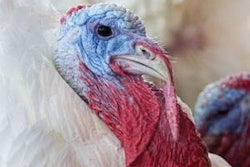If anything, the pressure will only increase on agriculture to become more sustainable. But what is truly sustainable and how some groups outside agriculture seek to define the term are entirely different.
No clear definition
To some, being sustainable means small farms and organic, a return to agricultural practices of a half century ago, and they seek to influence lawmakers and regulators to adopt policies adhering to such a definition.
The facts do not support a return to the past.
Modern, intensive production is far more sustainable than agriculture was in past decades. Looking at the issue of leaving a carbon footprint, for instance, modern dairy practices require considerably fewer resources than a dairy did in 1944, according to a Cornell University, USA, study.
Researchers found that dairy practices in 2007 required just 21% of the animals, 23% of the feedstuffs, 35% of the water, and only 10% of the land required to produce the same 1 billion kg of milk that farms in 1944 did. If one definition of sustainable is a reduction of the use of resources, today’s system of producing meat, milk, and eggs wins the contest, hands down.
In this issue of Feed International, we begin a series on sustainability. In Part I, we attempt to define the term because it means different things to different people.
All sources we interviewed agreed that it incorporates elements of the following: being profitable, because without profits neither a feed nor animal agriculture enterprise can remain in business; being environmentally responsible; treating animals with appropriate care; and the social ingredient, which includes treating employees well and being good citizens.
Efficient use of resources
An overarching theme in defining sustainability is the efficient use of resources.
On that score, I’d challenge any industry to accomplish what agriculture has in recent decades, as our above example clearly shows.
Can agriculture do an even better job at being sustainable? Of course it can, and agribusinesses are investing millions of dollars to do so. For example, a panoply of products have been developed that preserve feed and improve animal production, and in the case of the latter, reduce the volume of phosphorus and other ingredients per unit of animal waste. And more of these products will be developed in the future, which not only will make animal agriculture more efficient worldwide, but benefit global societies.
Ironically, efforts by well-meaning groups to influence agricultural practices would make them less sustainable. For example, efforts in Europe, and in the U.S. state of California, to ban caged layers would make egg production less sustainable. The key reason why: free-range layers require more land and are less efficient. Ultimately, that means more land from other uses must be found for egg production.
Organic is less sustainable
The same applies for organic production. There is nothing wrong with organic food and consumers who wish to spend a higher percentage of their incomes on it should have that right. But these same consumers would probably be surprised to learn that organic farming is less sustainable than conventional farming. It takes more resources to produce food organically than conventionally.
The voice of reason often gets lost on these issues in the media and in political dialogue, with the small is beautiful crowd and those who support free range and organic systems often scoring sound bite points. The industry is going to need to ramp up its efforts to counter with facts and reason, in hopes that the dialogue is conducted in a fair and honest way.
True, it’s difficult, as the recent battle over rBST (bovine somatotropin) milk has proved. A 2008 study by Cornell and Monsanto Co. scientists found that rBST use reduces the maintenance energy and protein requirements per unit of milk by 11.8% and 7.5%, respectively, and total feed requirements by 8.1%.
The study says that in looking at milk cow requirements to 2040, 8% fewer cows are needed in an rBST-supplemented population, while organic production systems require a 25% increase to meet production targets. The greater number of animals needed to produce a comparable quantity of milk in the organic system results from lower milk yields.
One key reason is that organic rules require that ruminants must have access to fresh pasture, thus lower yields due to a lack of adequate supply of nutrients, especially metabolizable energy associated with grazing behavior.


















